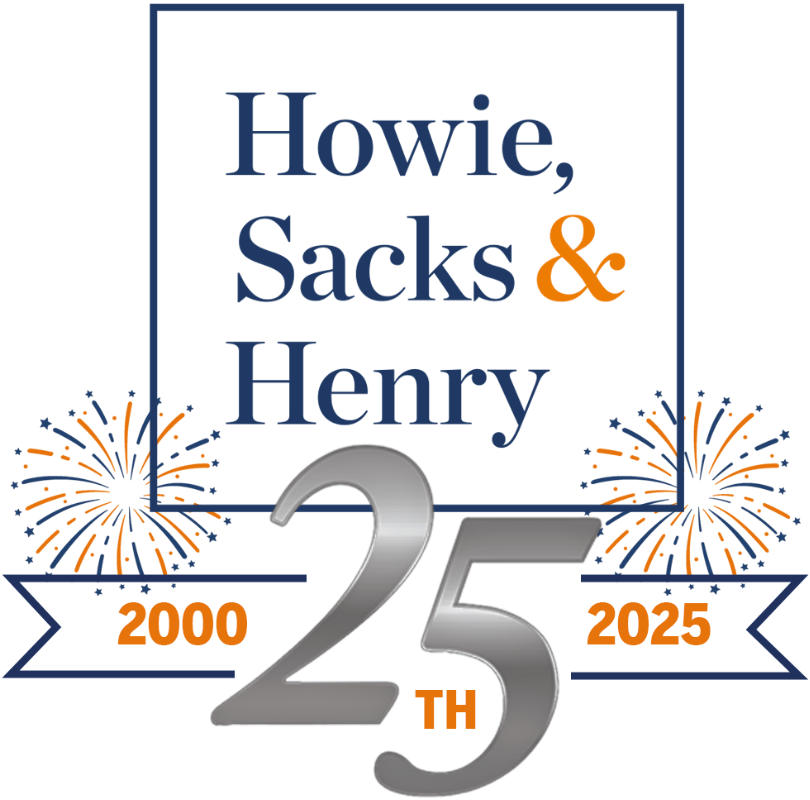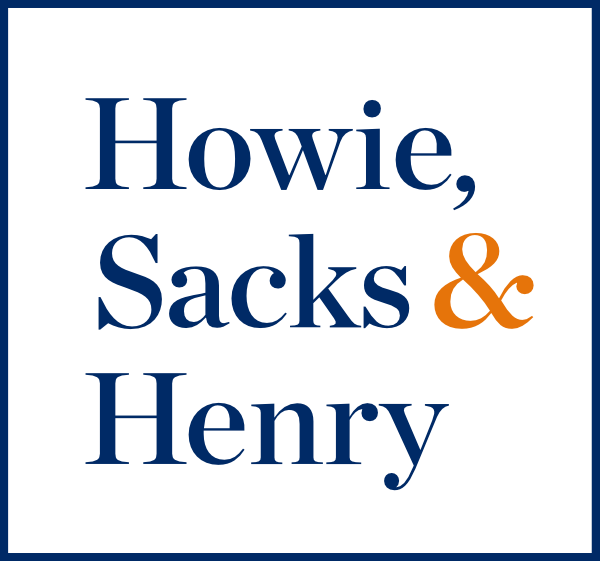
As counsel, our primary role is to pursue our clients’ rights fearlessly within the ambit of the law, while respecting our duties to the Court and the profession. When making claims on behalf of a client pursuant to the Statutory Accident Benefits Schedule – Accidents on or after September 1, 2010 [“SABS”], that means ensuring that our clients recover all benefits to which they are reasonably entitled. We would not be acting in accordance with our clients’ best interests if we did not so engage. However, determining what benefits your client might be entitled to is no easy task. It seems like the SABS is being amended constantly, and many provisions of the SABS remain vague and ambiguous. One area in which counsel, and their clients, can get into trouble is in dealing with collateral benefits to which the client may be entitled from sources other than an auto insurer, following a motor vehicle accident. It is important to keep in mind that an auto insurer is entitled to deduct certain benefits received by their insured from benefits that would otherwise be payable pursuant to the SABS. Understanding when and how an insurer is entitled to deduct collateral benefits plays a key role in ensuring maximum recovery for your clients.
Many clients have some form of insurance through their employers (extended medical benefits and/or short- or long-term disability). Some have received severance packages as a result of being terminated from their employment following an accident, or are in receipt of CPP or ODSP benefits. Add to the list private insurance policies, travel insurance policies, pensions, sick days and vacation days, and it is clear that counsel must turn over many rocks in search of forms of compensation for their injured clients. If an insured has collateral benefits available, the insurer may be entitled to a deduction pursuant to the SABS, whether those other benefits were actually received by the client or not. Therefore, it is important to fully understand the relevant legislation and regulations, as well as the case law that has developed in this area, in order to recover all benefits to which your client is reasonably entitled, and to ensure that they are not faced with deductions in respect of collateral benefits that they did not receive, but that were available to them.
Historically, the collateral deduction sections of the SABS and the Insurance Act were far more vague and open to interpretation. As a result, over the years those sections have been amended, and specific benefits have been expressly added to the list of collateral deductions (for example, CPP), so that there is currently little room to argue about which benefits are subject to the collateral deduction. As such, much of the older case law in this area is no longer applicable to the current SABS.
Legislation
Sections 268(6) and (7) of the Insurance Act1 state that the benefits available under the SABS are excess insurance to any other insurance indemnifying the injured person or in respect of a deceased person for expenses. These provisions are the starting point for the coordination between an accident benefits insurer’s obligations to pay certain benefits and the client’s rights to collect benefits from other sources. The term indemnifying has been highlighted to stress the point that, unless the legislation or regulations state otherwise, non-indemnity payments are not deductible from benefits payable pursuant to the SABS – for example a critical illness or other similar policy that might make a lump sum payment for the loss of a limb.
On the other hand, payments for Canada Pension Plan disability benefits, and short- and long-term disability benefits that are received by the insured are deductible from income replacement benefits (IRBs) under the SABS. While controversy surrounded the deductibility of some of these benefits historically, changes to the SABS have made it clear that these benefits are now to be deducted from IRBs, to the benefit of the auto insurer.
Section 7 of the SABS sets out the amounts payable for income replacement benefits as follows:
(1) The weekly amount of an income replacement benefit payable to an insured person who becomes entitled to the benefit before his or her 65th birthday is the lesser of “A” and “B”
“A” is the weekly base amount determined under subsection (2) less the total of all other income replacement assistance, if any, for the particular week the benefit is payable.
Other income replacement assistance is defined as follows in s. 4(1) of the SABS:
(a) the amount of any gross weekly payment for loss of income that is received by or available to the person as a result of the accident under the laws of any jurisdiction or under any income continuation benefit plan, other than,
(i) a benefit under the Employment Insurance Act (Canada),
(ii) a payment under a sick leave plan that is available to the person but is not being received, and
(ii) a payment under a workers’ compensation law or plan that is not being received by the person because the person has elected under the workers’ compensation law or plan to bring an action and is not entitled to the payment, and
(b) the amount of any gross weekly payment for loss of income, other than a benefit or payment described in subclauses (a)(i) to (iii) that may be available to the person as a result of the accident under the laws of any jurisdiction or under any income continuation benefit plan but is not being received by the person and for which the person has not made an application.
Section 3(7)(d) defines payments for loss of income under an income continuation benefit plan as follows:
(i) payments of disability pension benefits under the Canada Pension Plan,
(ii) periodic payments of insurance, irrespective of whether the contract for the insurance provides for a waiting period, deductible amount or similar limitation or restriction and irrespective of whether the contract is paid for in whole or in part by the employer, if the insurance is offered by the insurer,
(A) to persons who are employed while the contract for the insurance is in effect, and
(B) only on the basis that the maximum benefit payable is limited to an amount calculated with reference to the insured person’s income from employment.
Severance pay and retirement allowances are not deductible from IRBs. Section 7(3) sets out that an insurer may deduct 70 percent of any gross employment income received by the insured from an IRB. However, s. 4(1) defines “gross employment income” as:
…salary, wages and other remuneration from employment, including fees and other remuneration for holding office, and any benefits received under the Employment Insurance Act (Canada), but excludes any retiring allowance within the meaning of the Income Tax Act (Canada) and severance pay that may be received. [Emphasis added]
This means that EI benefits are deductible from IRBs (at 70 percent), even thought EI benefits are not considered “other income replacement assistance” under s. 4(1), which are 100 percent deductible from the IRB calculation.
An insurer may also deduct “temporary disability benefits” from IRBs or non-earner benefits (NEBs) if the benefit is received after the accident due to an impairment that occurred before the subject accident, pursuant to section 47(1) of the SABS. Temporary disability benefits are defined in section 47(3) as IRBs or NEBs, caregiver benefits, EI benefits, and certain WSIB benefits, depending on the date of the injury and the applicable legislation.
Ontario Disability Support Program benefits are not deductible from NEBs. Section 60 of the SABS states:
The insurer shall pay benefits described in this Regulation even though the insured person is entitled to or has received social assistance or similar payments, services or benefits under an Act of the Legislative Assembly or under similar legislation in another jurisdiction.
This was echoed in the FSCO decision, Anglin v. State Farm Mutual Insurance Company2. However, the Ministry of Community and Social Services, which administers ODSP benefits, is entitled to reduce ODSP benefits by the NEB amount. This avoids the double compensation problem. In fact, most insureds are required to authorize an assignment of benefits back to ODSP, specifically referenced in section 62(2) of the SABS.
Caselaw
The most common collateral benefits that are sought to be deducted from accident benefits by an insurer are short- and long-term disability benefits, from IRB payments.
The case law has confirmed that an insured need not prosecute a collateral benefit insurer, such as a long-term disability benefits insurer, once they are denied. This was the case in the seminal decision with respect to long-term disability benefits, Anand v. Belanger3, where Justice Stinson stated:
“It is one thing to accept (as I do) that the purpose behind s. 267.8(1) is to avoid double recovery by injured parties who receive an award of damages for loss of income in a tort proceeding and also receive income replacement benefits and long term and short term disability payments; it is entirely reasonable for those plaintiffs to be required to account to their tortfeasors for the sum they actually received, such that double recovery is avoided and overall automobile insurance rates are kept low. It is quite something else, however, for the tortfeasor (or more accurately its insurer) to reap the benefits of the risk and expense undertaken by the plaintiff in commencing legal proceedings and risking adverse cost consequence (not to mention her own legal expenses) pursuing a claim for unpaid IRBs or STDs or LTDs, without the tortfeasor/insurer bearing the costs of accomplishing that result. To follow the defendant’s approach would be to place an injured plaintiff who has recourse to IRBs or LTD coverage in a worse position than someone who does not. Such a result would be illogical.4 [Emphasis added]
Vanderkop
In Vanderkop v. The Personal Insurance Company of Canada5 the Court of Appeal reviewed a trial decision in which the insurer was ordered to pay income replacement benefits without being able to deduct a lump sum long term disability benefits settlement.
The Plaintiff, Ms. Vanderkop, was receiving income replacement benefits from The Personal. At the same time, Ms. Vanderkop advanced a claim for long-term disability benefits against Manulife Insurance after Manulife denied her monthly LTD benefit.
The LTD claim was settled for a lump sum amount of $57,500.00. The Minutes of Settlement provided that the lump sum payment was for all past, present and future claims, including aggravated damages, punitive damages and damages for mental distress.
The Personal took the position that it was entitled to deduct the amount of the long-term disability settlement as well as the future long-term disability payments which were available and given up by Ms. Vanderkop in her LTD settlement with Manulife.
After the mediation, The Personal refused to pay IRBs to Ms. Vanderkop even though she met the test for entitlement. It took the position that Ms. Vanderkop did not apply for LTD benefits within the meaning of section 7 of the Schedule. It also contended that it could deduct any LTD payments that might have been payable had Ms. Vanderkop successfully litigated with Manulife pursuant to s. 7(1)1(ii)6 of the Old SABS.
Both the trial judge and the Court of Appeal did not accept either position advanced by The Personal, and held that The Personal was not entitled to any deduction for a payment in respect of the lump sum settlement payment made by Manulife.
The Court of Appeal stated that “IRBs are to be reduced by LTD being received as a result of the accident. The legislation does not entitle Personal to set off hypothetical benefits applied for but refused. Ms. Vanderkop was not in receipt of LTD.”
It further held that “to treat LTD as being available would effectively oblige an insured to litigate with their collateral benefits insurer, at their own risk and expense, for the benefit and at the discretion of, their accident benefits insurer. In our view, SABS places no such obligation on an insured.”
Thus, where a settlement is entered with a long-term disability carrier that does not provide any specific breakdown with respect to how that settlement was reached, the payments do not constitute “a payment under an income continuation plan” in accordance with section 3(7)(d) of the SABS (section 7 of the Old SABS), and consequently, are not deductible from an income replacement benefit that may be ongoing.
Certainly, from the perspective of the insured, it will be more advantageous to resolve disputes with the LTD insurer separately and subsequently proceed against the accident benefits insurer.
Ng
In a recent decision, Ng v. Cole7, the Court once again confirmed the principles set out in Vanderkop. In this action, the Dominion of Canada General Insurance Company, was Mr. Ng’s accident benefits insurer. The Manufacturers Life Insurance Company was Mr. Ng’s long-term disability insurer. In addition to defending the action against it for IRBs, Dominion brought a crossclaim against Manulife for contribution and indemnity, on the basis that, if Dominion was forced to pay IRBs, Manulife should essentially pay the LTD benefits to Dominion pursuant to the collateral benefit deduction in the SABS. Manulife brought a motion to strike out Dominion’s crossclaim against it for contribution and indemnity. Dominion had paid $44,428 to Mr. Ng for IRBs, which it was alleging was an overpayment since Manulife ought to have been paying LTD benefits.
The Court in this case confirmed that the Dominion is only entitled to deduct LTD payments from IRBs if:
(a) Mr. Ng has been paid LTD benefits, or
(b) he failed to apply for LTD benefits.
Manulife clearly had not paid any LTD benefits and Mr. Ng had clearly applied for LTD benefits. The Court confirmed, “[u]npaid LTD benefits cannot be characterized as payments for loss of income received by the insured under an income continuation plan.” Dominion had no right of action against Manulife, and Manulife was successful in striking Dominion’s crossclaim.
The court commented on the fact that Dominion’s crossclaim against Manulife avoided the problem identified in Vanderkop of an insured having to litigate against an LTD insurer at his/her own expense for the sole benefit of the accident benefits insurer. Dominion’s position was that since it had paid IRBs, Manulife was obligated to pay LTD benefits. The court stated that the two insurers are completely separate with separate obligations to its insured.
Manulife is autonomous in its decision to pay or not pay LTD benefits to its insured. The SABS contemplate the precise situation where IRBs are payable, and the LTD insurer denies benefits.
Dominion also argued that Manulife had been unjustly enriched, at Dominion’s expense. This argument failed on the first branch of the test, being actual enrichment. Dominion paid the benefit to Mr. Ng, not Manulife, in accordance with the SABS. Manulife’s liability to pay LTD benefits was not affected by Dominion’s decision to pay IRBs.
In reality, this was an interesting attempt by Dominion to circumvent the perceived double recovery that insurers believe flow from the Vanderkop. By attempting to access the LTD benefits directly, Dominion sought to avoid the situation whereby the LTD claim could be settled on a lump sum basis without Dominion receiving credit for any portion of that settlement.
Practical Considerations
Treatment – Often times when clients have benefits available through their employer, treatment providers do not submit OCF-18s until those benefits run out, with the expectation that they will be compensated for any excess owing from the accident benefits insurer. First and foremost, the insurer will only reimburse the cost of treatment if an OCF-18 was submitted and approved. This means that an OCF-18 must be submitted even when extended medical benefits are still available. The treatment provider will submit invoices for payment through the collateral insurer first, with any balance then submitted to the accident benefits insurer. The additional reason for submitting an OCF-18 even when the collateral carrier will be paying the whole amount is to document and demonstrate an ongoing need for treatment from the outset of the file. It is much easier to work with an insurer who is aware of the ongoing needs (even if not paying for them) at an early stage than to work with an insurer who is surprised by claims many months after an accident.
LTD Claims – When an LTD insurer is making monthly payments, it is clear that those payments are deductible from IRBs, in accordance with section 7 of the SABS. However, once an LTD insurer refuses to pay benefits, there is some flexibility created through a combination of sections 7 and 52 of the SABS and the Vanderkop case discussed earlier. At some point in time, the LTD insurer may make an offer of settlement. In agreeing to any such settlement, counsel should be careful to structure and document that settlement in a way that is advantageous to their client, while still being reasonable based on the facts of the case. If benefits are taxable, the LTD insurer is obligated to provide a T1198A form, and your client’s tax obligations will be based on that form. Ensure that a reasonable amount is allocated to each past year, not only to reasonably minimize the past tax obligation (putting the past lump sum into one year, usually the year of settlement, will create a large, totally unwarranted tax liability), but also to reasonably minimize the deduction to which the AB insurer is entitled. This is especially the case when the past benefits have been heavily compromised. You may find that organizing the past benefits properly will minimize, or even eliminate, a repayment to the AB insurer, particularly in the case of higher income earners. If the benefits are not taxable such that that insurer is not obligated to break down the past benefits paid, once again care ought to be taken to document the settlement in a reasonable fashion that will minimize the repayment owing to the AB insurer.
Any payments that are not considered to be past benefits are likely going to be shielded from deduction by the AB insurer pursuant to Vanderkop. Again, the allocation must be reasonable (do not forget that the insured also owes a duty of good faith to the insurer). Further, it is more likely that these other payments will be shielded from deduction if non-contractual damages were pursued as part of the claim. If those damages (aggravated and punitive damages) were not pursued, or were abandoned at the discovery stage, an AB insurer may attempt to challenge the non-deductibility of such payments.
It is the insured’s responsibility to notify the insurer when they are in receipt of LTD benefits, including a settlement of such benefits. However, it is not the insured’s responsibility to repay benefits owing to the AB insurer until the insurer asks for the repayment pursuant to section 52 of the SABS. And, in accordance with section 52(3), if the insurer does not provide the required notice of repayment “within 12 months after the payment of the amount that is to be repaid”, the client no longer has to repay those benefits to the insurer. Since the insured must repay any benefits paid to her due to a simple “error on the part of the insurer”, failure to advise the insurer of the receipt of LTD benefits will most likely insulate the insurer from the provision of section 52(3) which would otherwise give them only 12 months from the receipt of the LTD benefits to request repayment.
Travel insurance – Travel insurance is another area of collateral benefits that ought to be kept in mind when clients are involved in motor vehicle accidents while travelling in the United States or out of province. If travel insurance is available, it ought to be accessed. With dwindling AB limits for medical and rehabilitation, out of province medical care, especially in the United States, could well exhaust most or all of the non-catastrophic accident benefits limits. Even though one might be able to argue that OHIP is responsible to pay for some of the care provided, the amount covered thereunder pales in comparison to the actual costs. Seeking out coverage under a travel insurance policy, be it one purchased specifically by your client, or coverage that might be available under a credit card or other similar avenue, will be necessary in order to preserve the available AB limits. Occasionally, an issue will arise as to whether the travel insurance policy is the primary payor of such expenses, or whether the travel insurance policy is excess to the coverage available under the AB policy. Although sections 268(6) and (7) of the Insurance Act attempt to dictate that the AB policy is always excess to any other insurance, the wording of the coverage provisions in the travel insurance policy can thwart that attempt. In the 2006 decision of the Ontario Court of Appeal in RBC Travel Insurance Co. v. Aviva Canada Ltd., 82 O.R. (3d) 490, the Court held that explicit wording in a travel insurance policy to the effect that the policy is excess to any other coverage (including automobile insurance coverage, although it was not specifically mentioned in the policy in question) can trump the provisions of section 268. Essentially, since the travel insurance policy does not indemnify the insured when there is other insurance available, the provisions of section 268(6) and (7) are not triggered. It will require very specific wording to this effect in the policy in order to make the travel insurance secondary to the auto policy, but this fact must definitely be kept in mind by counsel when claims are being presented in a multiple insurer situation.
Election of weekly benefits – If an insured has sustained a catastrophic injury and qualifies for both an income replacement benefit and a caregiver benefit, consideration ought to be given to the availability of LTD benefits before an election between the two AB weekly benefits is made. While LTD benefits are deductible from IRBs, they are not deductible from the caregiver benefit. Before the election is made, careful calculations need to be done to ensure that the election is in the best interests of your client, in both the short and long term (to the extent that one can ever determine what is best in the “long term”).
ODSP repayments – Consideration should be given to the specific allocation of benefits in a Settlement Disclosure Notice when settling an accident benefits claim on a full and final basis when ODSP is involved. Keeping in mind that there may be an assignment back to ODSP regardless of the breakdown of benefits, the breakdown in the Settlement Disclosure Notice may help, or hurt, an insured when dealing with ODSP to determine the amount owing, if any, pursuant to the assignment.
Conclusion
It is easy to get lost in the technical maze that is the SABS when considering collateral benefit deductions from accident benefits, but understanding the interplay between accident benefits and collateral benefits will prove advantageous for your client, regardless of whether you are representing an insured or an insurer. From the insured’s perspective, opportunities to maximize recovery may be few and far between, but are available if the proper strategy is employed with some forethought. It is extremely important to get all of the necessary information from an insured client at the outset to understand the entire picture of the collateral benefits potentially available. From an insurer’s perspective, there are ample opportunities to minimize the total cost of benefits payable to an insured from your client. As such, it is equally important to get a full picture from the insured of collateral benefits available. Of course, obtaining the “full picture” in this maze is easier said than done.
1 R.S.O. 1990, c. I.8.
2 FSCO A11-000817, October 12, 2012 [“Anglin“].
3 2010 ONSC 5356.
4 Ibid. at para. 32.
5 [2008] O.J. No. 1937 (Ont. SCJ), [2009] O.J. N0. 2616.
6 Statutory Accident Benefits Schedule – Accidents on or After November 1, 1996 [“Old SABS”].
7 2013 ONSC 6588 (October 24, 2013) [“Ng“].







